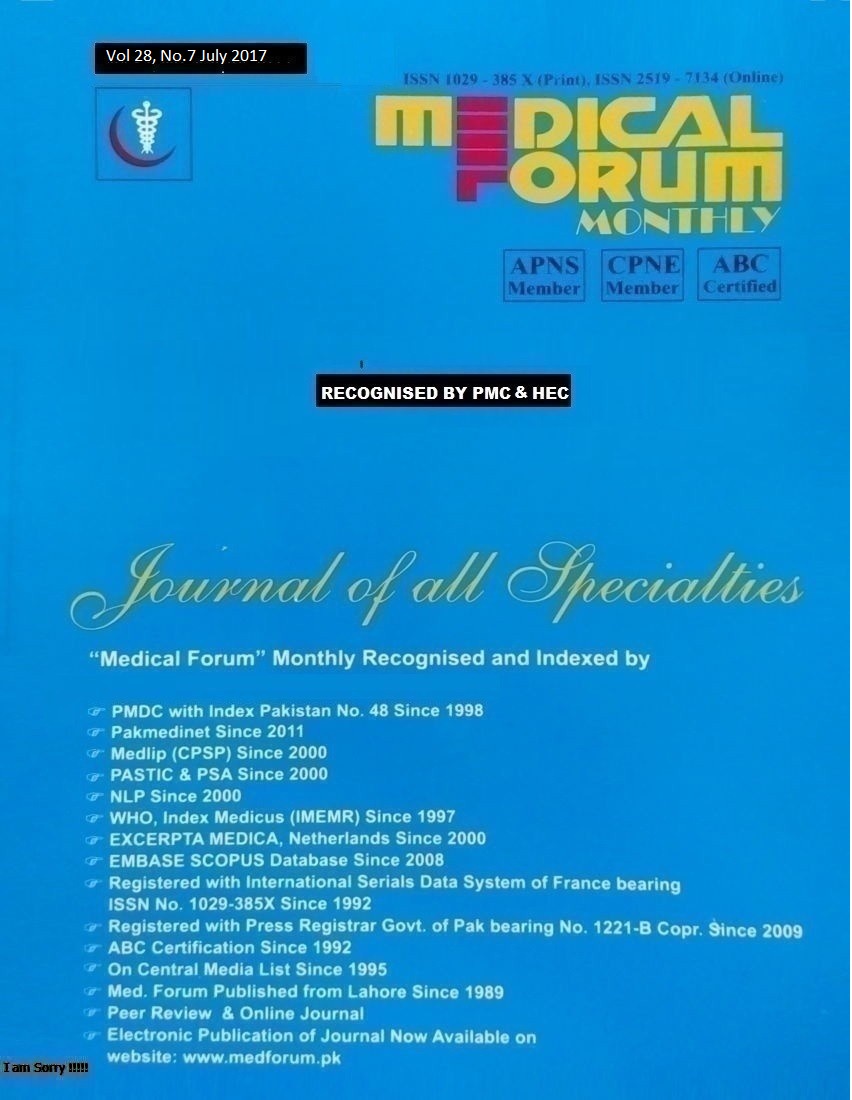
4. Making Local Anesthesia Injection Pain Free
Obaid ur Rahman1, Shehab Afzal Beg1, Syed Sheeraz ur Rahman2 and Fahad Hanif Khan1
ABSTRACT
Objective: To compare mean pain score on injection between xylocaine with adrenaline and buffered xylocaine with adrenaline with addition of bicarbonate for patients undergoing facial laceration repair in Accident and Emergency Department after trauma.
Study Design: Double Blinded Randomized Control Trial
Place of study: This study was conducted at the Accident and Emergency Department, Liaquat National Hospital, Karachi from March 1st ,2016 to February 28th ,2017.
Materials and Methods: Patients were selected from Accident and Emergency in Liaquat National Hospital. After informed consent, the patients were divided into two groups; with Group A comprising of patients injected with xylocaine with adrenaline; and Group B consisting of patient injected with buffered xylocaine with adrenaline with the addition of bicarbonate. Patient was assigned a group randomly by using lottery method. Buffered or unbuffered local anesthetic solution was prepared by principle investigator. Solution was injected by a second investigator, who was kept unaware about the nature of solution Patient was asked to define his pain as 0 being no pain and 10 being worst pain possible.
Results: The mean age of the patients in group A was 30.9 ± 6.4 and in group B was 32 ± 5.9. When outcome variables i.e. mean pain of group A was 5.7 ± 0.7 and group B was 1.3 ± 0.4 with value of <0.0001, was compared also, mean pain score in specific age groups, mean pain score in different gender, site, mechanism and age were compared, significant differences were observed.
Conclusion: In our study, it is found that buffered xylocaine is less painful to inject as compared to non-buffered xylocaine.
Key Words: Xylocaine with adrenaline, buffered xylo a ne with adrenaline adding bicarbonate and traumatic lacerated wounds, pain.
Citation of articles: Rahman O, Beg SA, Rahman SS, Khan FH. Making Local Anesthesia Injection Pain Free. Med Forum 2017;28(7):16-19.
